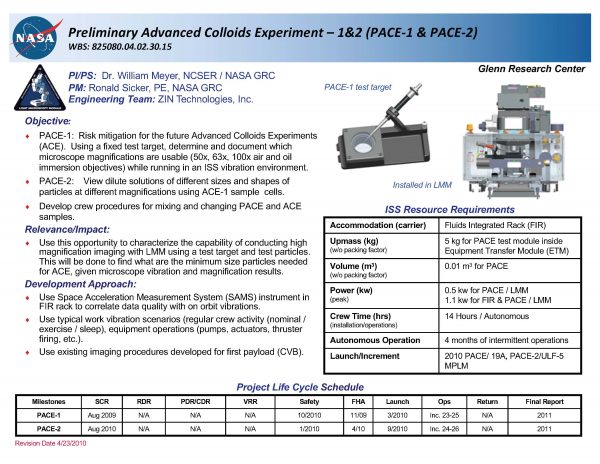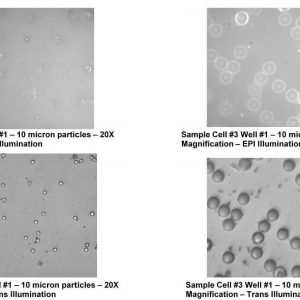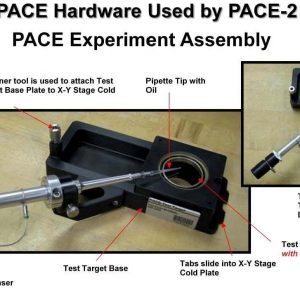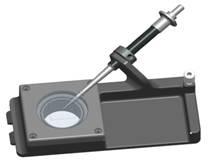PACE-2
Preliminary Advanced Colloids Experiment – 2 (PACE-2)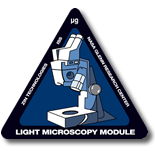
While the Preliminary Advanced Colloids Experiment (PACE) looks at the gross effects of vibration on a static test target and how this impacts resolution, PACE-2 follows up on this work by looking at a three-dimesional sample in a sample container that is comparable to what will be used by the Advanced Colloids Experiment (ACE). This work also aids in the development and optimization of crew procedures for the future ACE investigation.
The test images will be taken both with the Active Rack Isolation System (ARIS) turned on and with it turned off. The results of the tests determines the size of colloidal particles that can be resolved by ACE and what size particles need to be used for the experiments that have been proposed for ACE.
Science Objectives
Preliminary Advanced Colloids Experiment – 2 (PACE-2) characterizes the resolution of the high magnification colloid experiments with the Light Microscopy Module (LMM) to determine the minimum size of the particles that can be resolved by the Advanced Colloids Experiment (ACE). There is a direct relationship between magnification, particle size, test duration and on-orbit vibration that is quantified.
Applications
Space Applications
The knowledge from PACE-2 and PACE will enable ACE. ACE will fly samples that may have an important impact on our understanding of fundamental physics. An immediate space application for this technology demonstration is in extending the shelf-life of consumables on future long-duration missions.
Earth Applications
PACE-2 enables ACE, which later will provide important data that is not available on Earth. This data guides our understanding of phase separation (e.g., shelf-life, product collapse), and how it competes with crystallization and impacts production. Additionally, product shelf-life may be dependent upon binodal decomposition and possibly upon Oswald ripening in the emulsion samples. It is for this reason that a better understanding of these processes could have an enormous commercial impact in a wide variety of industries.
Previous Missions
ISS Expedtion 25/26 is the first operation of PACE-2 in microgravity. PACE-1, the precursor to PACE began operation in ISS Expedition 23/24.
Related Documents
Currently Updating…
Publications
Currently updating…
Gallery
Contact Information
Principal Investigator: Jacob Cohen, NASA ARC
Principal Investigator / Project Scientist: Dr.William V. Meyer, NCSER at NASA GRC
william.v.meyer@nasa.gov
216-433-5011
Project Manager: Ronald J. Sicker, NASA GRC
Ronald.J.Sicker@nasa.gov
216-433-6498
Engineering Team: ZIN Technologies, Inc.

